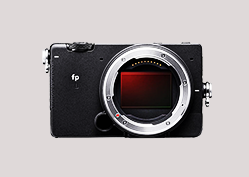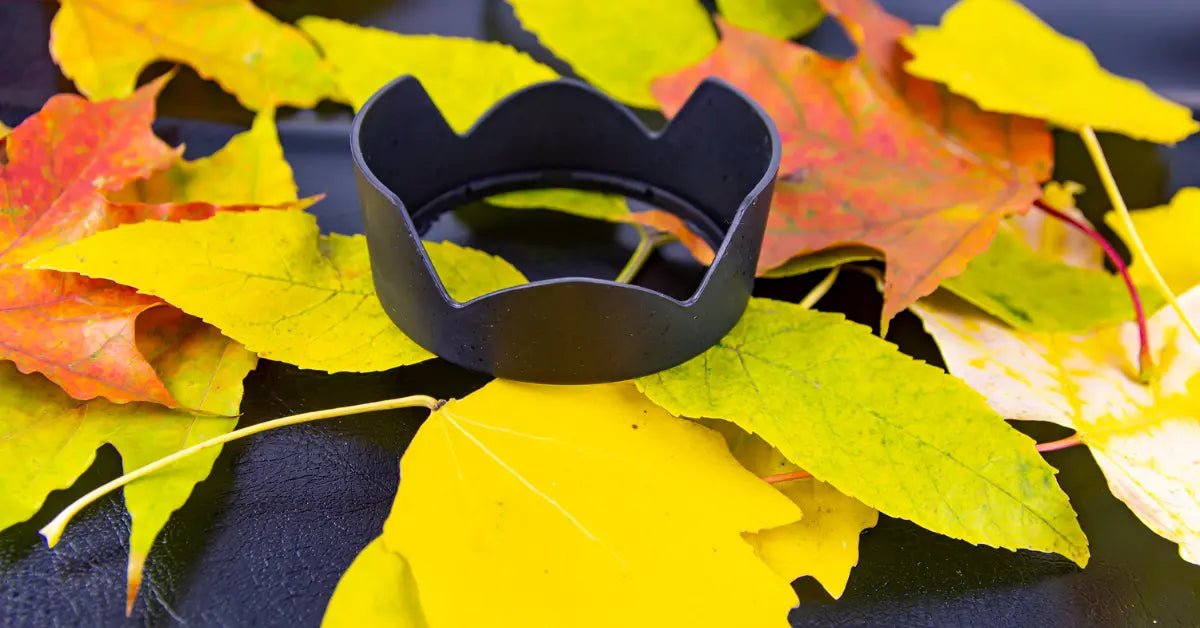Ever stumbled upon a photo that just felt right? You know, where everything seems perfectly in place, and you can't help but go, "Wow, that's a great shot!" Well, guess what? That's not just luck or a fluke. It's all about nailing the balance in photography. It's like the secret sauce that can take your photos from "meh" to "whoa"!
So, what's this balancing act all about? It's not just throwing stuff in a frame and hoping for the best. It's about understanding how different elements can play nice together to create a photo that's pleasing to the eye. And it's not just for the pros – anyone with a camera (yep, even you with your shiny Fujifilm X-T5) can master this.
Think of it as a game where each piece has its place. You've got colors, lines, shapes, and all that jazz, and your job is to make them work together in harmony. It's like being a conductor of an orchestra, but with visuals. And the best part? Once you get the hang of it, your photos will start to pop in ways you never imagined.
So, grab your camera (don't forget that Fujifilm X-T5), and let's discuss into this world of balancing elements. It's going to be fun, a bit challenging, and totally worth it. Let's turn those ordinary shots into extraordinary masterpieces!
Understanding the Elements of Photography

Alright, let's take a step back and break this down in a more relaxed way. Think of photography as a bit like cooking. Just like you need the right ingredients to make a dish pop, in photography, it's all about mixing different elements to create an image that's more than just a snapshot. It's not just about snapping what you see; it's about how you see it and present it.
So, what are these ingredients? First up, we've got color. It's like the spice of your photo – it can change the mood, create a vibe, or tell a story. Then there's texture. Think of it as the crunch in your dish. It adds depth and makes your photo feel almost touchable.
Lines and shapes are your main ingredients. They guide the viewer's eyes around the photo, kind of like how a good dish guides your taste buds. Straight lines can lead you one way, while curves can take you on a different journey.
And lastly, space. It's like the plating of your dish. It's not just about what you put in but also about what you leave out. Space can make your subject stand out or create a sense of calm or tension.
Each of these elements is a tool in your toolbox. Knowing how to use them, mix and match them, can turn a plain photo into a story worth telling. It's all about how these elements play together in the sandbox that is your frame. Keep this in mind, and you're well on your way to capturing shots that are more than just pretty – they're meaningful.
The Role of Symmetry and Asymmetry
Let's discuss about symmetry and asymmetry in photography, because they're like the yin and yang of making your shots look amazing. When we talk about balance, most folks immediately think of symmetry – you know, that perfect mirror image vibe. It's super satisfying to look at and brings a kind of peaceful harmony to your photos. It's like that feeling of zen you get when everything just lines up perfectly.

But here's the thing, asymmetry is the secret sauce for some seriously cool and dynamic shots. It's all about breaking the rules in style. Instead of going for that mirror-image look, you throw your subject off to the side a bit. This is where the rule of thirds comes into play – imagine your frame is divided into nine equal parts by two horizontal and two vertical lines.
Now, place your subject along these lines or at their intersections. Suddenly, your photo goes from "nice" to "whoa, that's intriguing!"
And guess what? The Fujifilm X-T5 is like your best buddy in making this happen. Its advanced focusing system is a game-changer. It lets you lock onto your subject super quickly, even when they're lounging off to the side of your shot, making it feel like a walk in the park to capture these off-center, attention-grabbing compositions.
So, whether you're all about that symmetrical life or want to jazz things up with some asymmetry, the X-T5 has got your back. It's all about playing around and seeing what feels right for the story you're trying to tell with your photo.
Color and Contrast

Colors are like the spices of an image – they can totally change the flavor! When you get the colors right, your photo can pop with emotions and set the whole vibe. Think of complementary colors – those are the ones opposite each other on the color wheel.
Pair them up in a photo, and bam! You've got yourself an image that's lively and jumps right at you. It's like wearing a red hat with a green shirt; it's bold, it's vibrant, and it's impossible to ignore.
Now, on the flip side, there are analogous colors. These guys are more like neighbors on the color wheel, chilling out next to each other. When you use these in your photos, you get a look that's more chilled out and harmonious. It's like a sunset with its smooth blend of oranges and reds – it just feels right and soothing.
And hey, let's not forget about contrast. It's all about the play between light and dark. High contrast images are like a shout; they grab your attention with their bold differences. You've got your bright highlights and deep shadows duking it out, creating a drama that's hard to look away from. On the other hand, low contrast images are more like a whisper.
They're subtle, soft, and gentle on the eyes. The light and dark tones are closer together, giving you a more laid-back and mellow vibe.
So, when you're out there snapping pics, remember to play around with these color tricks. Whether you want your photo to shout or whisper, it's all in your control. Just tweak those colors and contrasts, and watch your images come to life!
Texture and Patterns
Textures and patterns are like the secret spices in the recipe of photography – they add that extra zing, making your photos pop! Think of textures as the feel of your image. It could be the roughness of an old brick wall, the softness of a fluffy cloud, or the sleekness of a shiny car. Patterns, on the other hand, are all about repetition – think rows of colorful houses, a series of arches, or a field of sunflowers.

Now, here's the fun part: mixing these up in your photos. It's like a dance where you want both partners to shine without stepping on each other's toes. You've got to find that sweet spot where the textures and patterns play off each other, creating a scene that's captivating but not chaotic.
It's about making sure they complement each other, so your viewer's eyes glide smoothly across the image, taking in every detail without getting overwhelmed.
And guess what?
The Fujifilm X-T5 is your perfect dance partner for this. Its high-resolution sensor is a game-changer – it picks up the tiniest details, making textures look so real you could almost touch them, and patterns so crisp they practically jump out of the photo. Whether you're zooming in on the intricate lines of a leaf or capturing the rhythmic symmetry of a cityscape, this camera nails it every time.
So, go ahead, play around with textures and patterns. Experiment with different combinations, see how they interact under various lighting, and watch as your photos transform from simple snapshots to captivating stories. With the Fujifilm X-T5 in your hands, you're not just taking pictures; you're crafting visual experiences.
Negative Space
Think of it as the breathing room around and between everything else in your photo. It's not just empty space; it's a crucial part of the picture's vibe.

So, why is negative space such a big deal? Well, it's all about giving your main subject some space to shine. Imagine a photo where everything is crammed together – it's like a visual traffic jam, right? Negative space opens things up. It's like a visual pause, giving your eyes a rest and helping to highlight the main show – your subject.
But here's the cool part: how you use this space can totally change the feel of your photo. Want to make something look really important and grand? Surround it with a bunch of negative space. It's like putting your subject on a visual pedestal. On the flip side, if you want to create a sense of intimacy or coziness, you might go for less negative space.
And guess what? Playing with negative space can also tell a story. A lone tree in a vast desert can speak volumes about isolation. A single person in a large, empty room might give off vibes of loneliness or contemplation.
The trick is to find a balance. Too much negative space, and your subject might look lost. Too little, and your photo might feel cluttered. It's like seasoning food – you gotta find the right amount.
So next time you're out with your camera, take a moment to look at the spaces between things, not just the things themselves. It might feel a bit weird at first, like you're focusing on the 'nothing', but trust me, that 'nothing' can turn your photos into something pretty special.
Practical Tips for Balancing Elements
- Experiment with different compositions.
- Pay attention to light and shadows.
- Use the Fujifilm X-T5’s dynamic range to capture detailed highlights and shadows.
- Practice shooting in various conditions to understand how balance works in different environments.
Conclusion
Balancing elements in photography is both an art and a science. It requires a keen eye, a bit of creativity, and an understanding of the basic principles. By mastering this skill, you can create images that not only capture a moment but also tell a compelling story.
Remember, the key to great photography is not just what you see, but how you see it.
So, grab your camera, and let's create some balanced, beautiful images that speak volumes. And don't forget, practice makes perfect. Keep experimenting, keep learning, and keep balancing!
Are you ready to take your photography skills to the next level? Share your balanced compositions with us, or if you have any questions about balancing elements in photography, feel free to ask in the comments below. Happy shooting!
You can visit Nuzira to learn more about it and join our Discord channel to spice things up!





